Old spice tins hold more than fragrant dust — they tell a tale of changing tastebuds and vanished cooking fads.
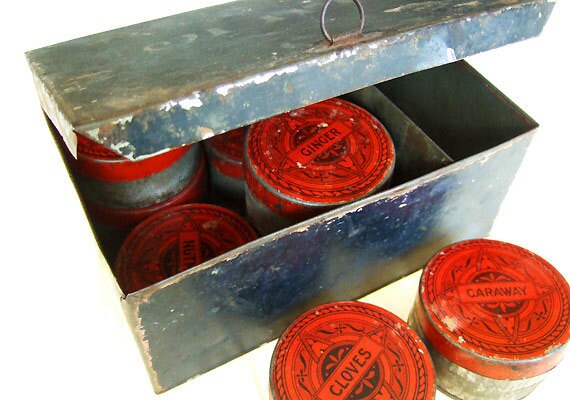
Sarah Lohman is a historic gastronomist. She recreates historic recipes as a way to make a personal connection with the past, as well as to inspire her contemporary cooking. You can follow her adventures on her blog, Four Pounds Flour. In this series, Lohman will comb Etsy for items that speak to America’s culinary past. I was attracted to my latest Etsy purchase because of its time-worn patina: the deep blue box had artfully worn away, creating a rich texture of tin, paint and corrosion. But what I view simply as a beautiful object was once very important to someone’s kitchen: in fact, this tin box was once used to store spices. It opens with a tonal scrape of metal against metal to reveal eight small, round tins, each labeled with a transfer design in red and black ink: Cinnamon, Cassia, Caraway, Cloves, Ginger, Nutmeg, Mace and Mixed Spices. When I carefully pull off their lids, the tins still contain the faint waft of baked goods and a stale dusting of antique spice. This combination of spices was deemed the most important for the original owner’s kitchen, but they’re probably not the same eight spices you would choose for your kitchen today. Over the years, we’ve developed preferences for different spices and flavorings in our cooking. An apple pie, for example, made from a recipe published in 1800, 1900, or 2000, can have completely contrary flavor profiles because of the different spices used. The spices in this collection not only tell us about the kinds of recipes this woman cooked her kitchen, it provides a glimpse into the culinary world native to when this box was made. Based on the spices it contains, I’d date this box to the 1850s. Particularly telling are the nutmeg and mace, which were very popular flavors in the middle of the 19th century, as mace has all but disappeared from contemporary cookbooks. Most interesting is the inclusion of cinnamon and cassia — two spices that are both in common use today, although you may not realize you have cassia in your cupboard. Let’s do an experiment. Go to the grocery store and head to the spice rack. Grab an inexpensive bottle of cinnamon and a fancy bottle marked “Ceylon” cinnamon. Take them home and do a comparison. You’ll notice a distinct difference in color, smell, and flavor.
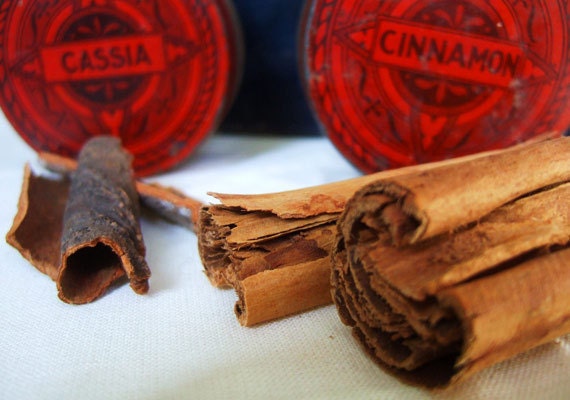 Cinnamon vs. cassia.
Cinnamon vs. cassia.The cheap cinnamon is actually cassia, the bark of a tree native to Southeast Asia. America is one of the few countries where it is legal to sell cassia under the name “cinnamon.” It’s not entirely a bad thing: cassia contains more cinnamon oil than true cinnamon, which makes it significantly more pungent. Cassia is the flavor of cinnamon buns, scented candles, and red hot candies. Ceylon cinnamon is true cinnamon. It’s native to Sri Lanka — known to the English as Ceylon — and is harvested from the soft inner bark of the cinnamon tree. It’s not as pungent as cassia and generally has a more subtle, floral flavor and a smell reminiscent of a craft store. Unless you’re buying a spice clearly marked “Ceylon” cinnamon, more likely than not you’re actually purchasing cassia. Cassia and cinnamon are some of the oldest spices known to man — both are mentioned in the Bible. But until the 20th century, they were thought of as distinct spices that could lend their individual flavor qualities to a dish, rather than being indiscriminately lumped into the same category.
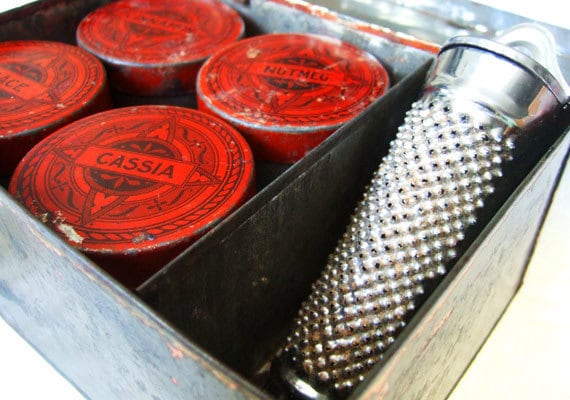 A nutmeg grater, in situ.
A nutmeg grater, in situ.Nutmeg and mace are another pair of related spices. This spice box has space for a nutmeg grater (seen above), and graters today look exactly the same as their 18th century counterparts. There was a huge fad for nutmeg starting in the 1840s, after nutmeg trees were introduced to Grenada from their home, the tiny Banda Islands in Indonesia. Greater cultivation made nutmeg cheap and affordable worldwide; Grenada still supplies 40% of the world’s nutmeg. If you keep whole nutmegs in your kitchen, they never lose their pungency, and release their oils only when freshly grated.
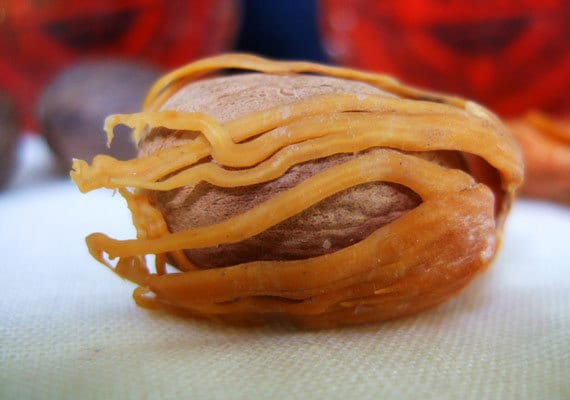 Nutmeg%20and%20mace%2C%20together%20as%20one.%3Cp%3ESarah%20Lohman%3C%2Fp%3E
Nutmeg%20and%20mace%2C%20together%20as%20one.%3Cp%3ESarah%20Lohman%3C%2Fp%3EMace is actually part of a nutmeg. Nutmeg trees bear a fruit: there’s the skin, the pulp, and the seed (a nutmeg), which is covered by a bright red membrane that looks like a tentacled monster. That’s mace! The flavor of mace is reminiscent of nutmeg, but has a little red pepper-like heat. In the 18th and 19th century, mace was used in sweets paired with nutmeg; in fact, pumpkin pie spice still contains mace today. It was also used with stewed meats and soups. Mace went from being one of the most commonly used spices of the 18th and 19th centuries, to non-existent in the 20th and 21st. No one really seems to know why we lost a taste for it. Mace was often paired with apples in the 19th century. The flavors work wonderfully together, so fall is the perfect time of year to consider a mace revival. The two are paired below in a recipe based on “Apple Sauce Gone To Heaven,” from Dishes and Beverages of the Old South, a 1913 cookbook that sought to create a record of pre-Civil War southern food. The author notes, “Thus a poet names it, though I, the architect thereof, insist that it is wholly and beautifully mundane.” You can sometimes find mace in the spice aisle of the grocery store, but you may have better luck in a specialty spice store or ordering it online.
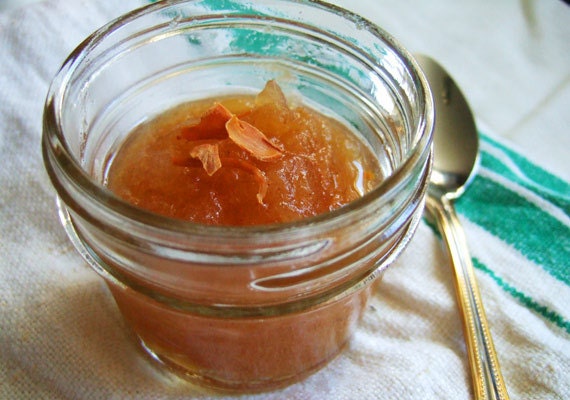 Sarah%20Lohman
Sarah%20LohmanApplesauce Gone to Heaven 2 large, or 3 medium, baking apples The zest and juice of half a lemon ½ teaspoon ground mace ½ teaspoon cinnamon (or cassia) 3 whole cloves Pinch fresh ground black pepper 1 cup sugar (white or brown) ½ cup water Zest lemon into a large saucepan; juice and set aside. Peel and core apples, and chop into one-inch chunks and add them to the saucepan. Add lemon juice to the saucepan in stages as you work, tossing the apples to coat. Add spices, water and sugar. Place over high heat, cover, and bring to a boil. Turn heat down to medium and simmer 15-20 minutes until apples are extremely soft. Serve as is, or use an immersion blender to puree into a smooth applesauce. Serves four. What are your favorite spices?



